
Ashley Cook
November 30, 2020
Shuddering, the most recent exhibition by Chris Schanck at Reyes | Finn, feels like a pseudo showroom for the interior designers of The Fifth Element. This is not a surprise, as this artist has been working in this way for the better part of their career. In many cases, Chris Schanck has been described as a designer, actually. Their work treads the line between these two worlds.
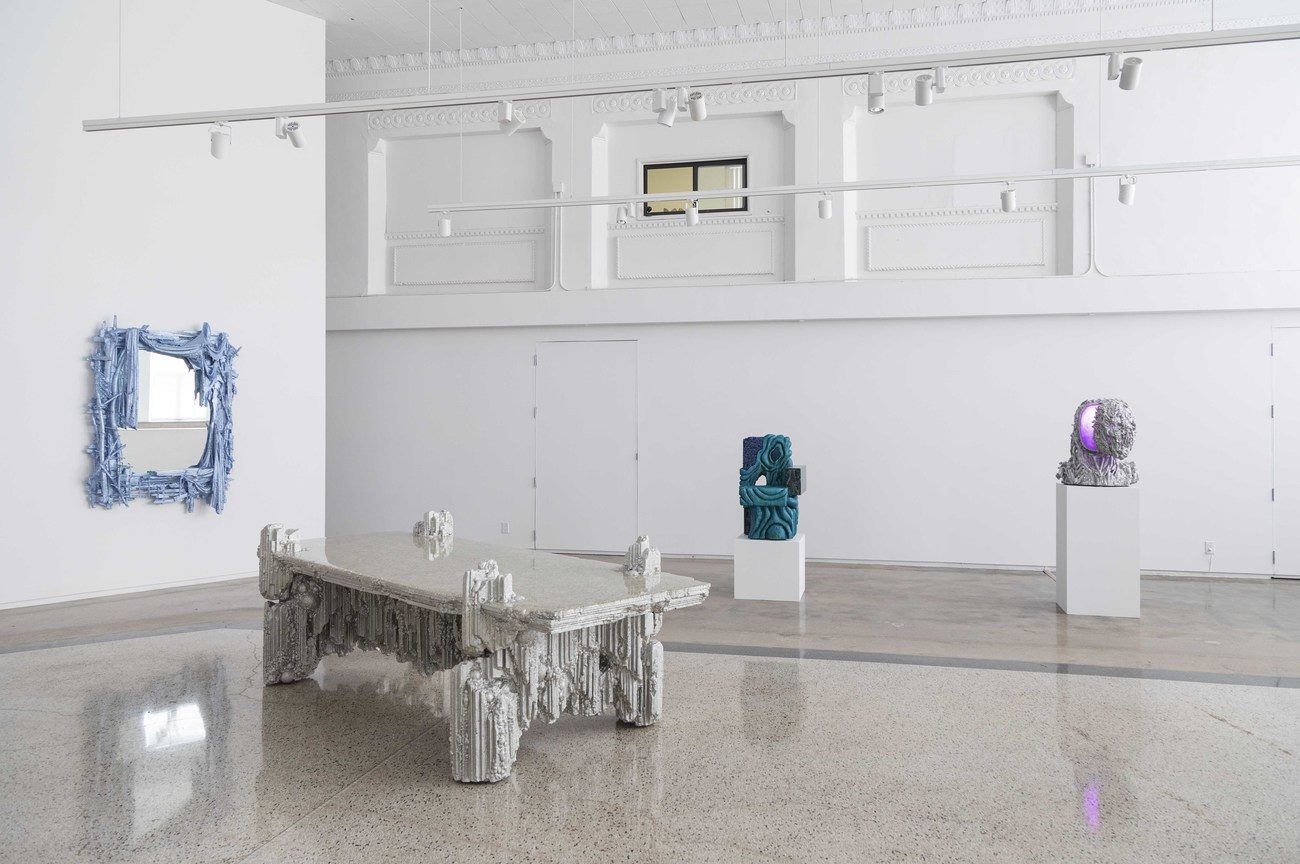
One chandelier, two candelabras, three chairs, four tables; without any writing for the show, we are left to navigate the work with the help of the titles and the language of form, aesthetics and material. This does not seem to really be an issue though, because the work is eye-catching enough to satisfy the mind without too much of a need for theoretical support.
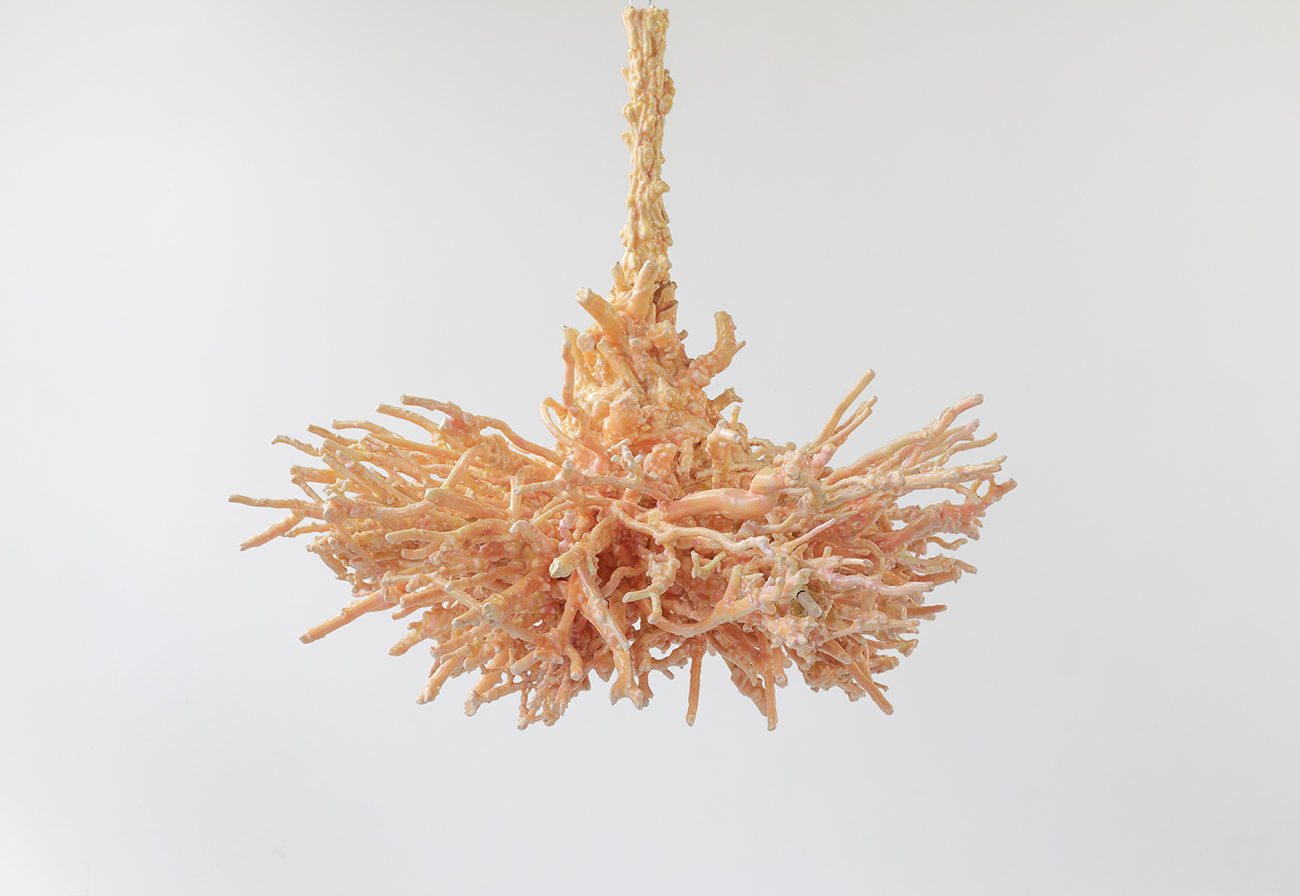
The thing that makes art so attractive is the ambiguity that it holds, whether conceptually, philosophically or materially; in contrast to many works throughout the history of art that leave us wondering why it was made, this work is intriguing enough to just sit with and analyze in an attempt to comprehend how it was made. Chris Schanck and their team of support artists have become masterful at manipulating various materials, including found objects, aluminum foil, polystyrene, wood, resin, steel, suede, polyurethane, glass, bronze, and foam.
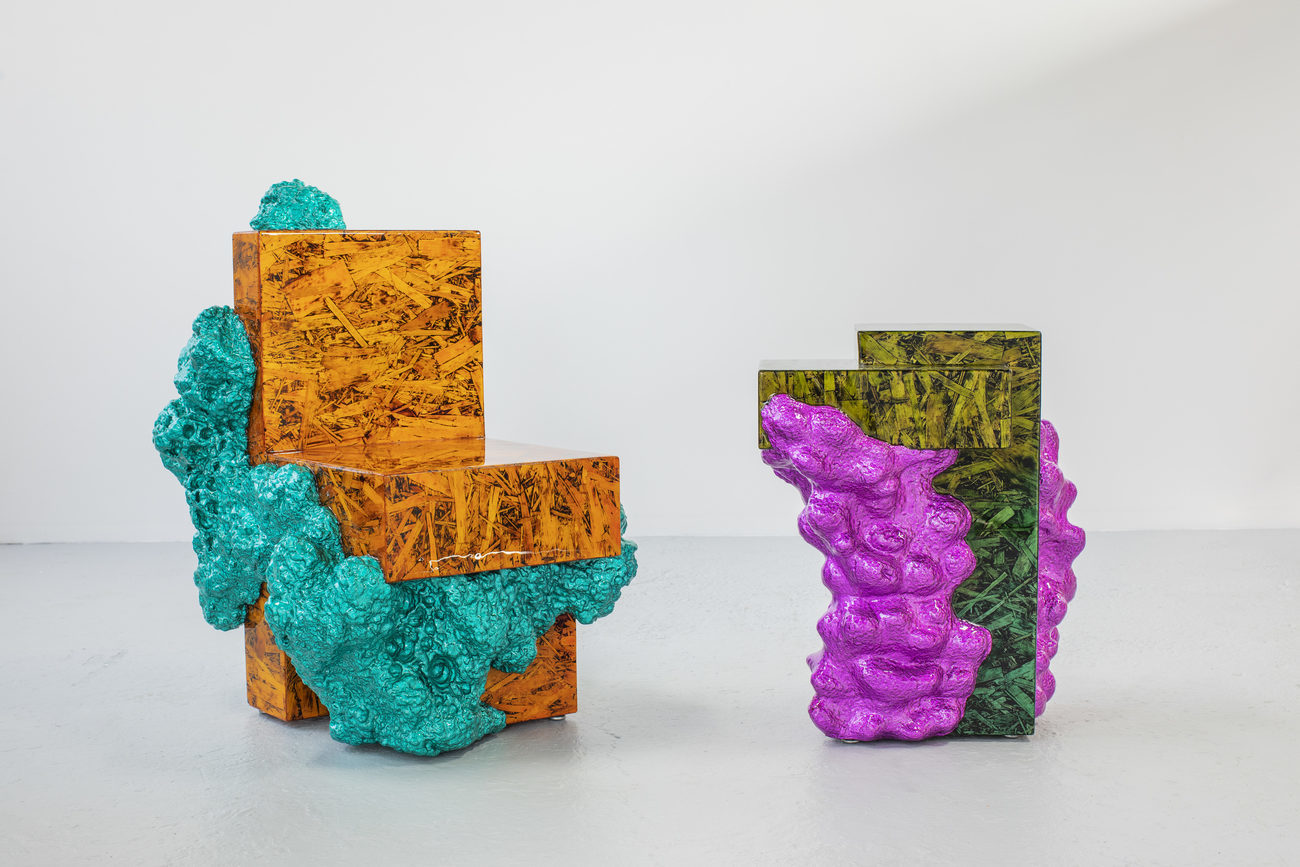
Despite almost all of the materials being man-made, they have been melted down, built up, cut apart, glued and combined to resemble what we would readily find in the natural world; maybe under the sea (Mum Chandelier), on top of a mountain (Mono Chair), in a rainforest (Signal Light), in a cave (Twin Stone Candelabras), in a swamp (Amoeba Cabinet)...some convincing enough to seem actually of nature, while others entertain a playful, set-design, toy aesthetic. Mono Chair could very well have been made for The Flintstones movie, and I could totally see Amoeba Cabinet as an artwork in Beetlejuice.
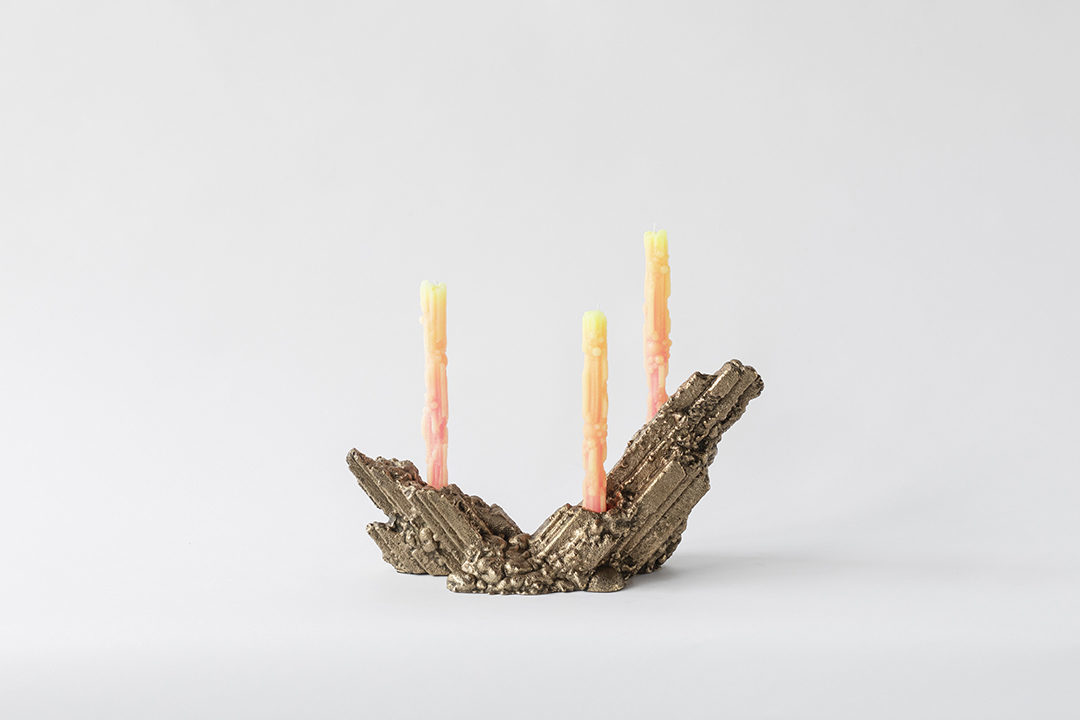
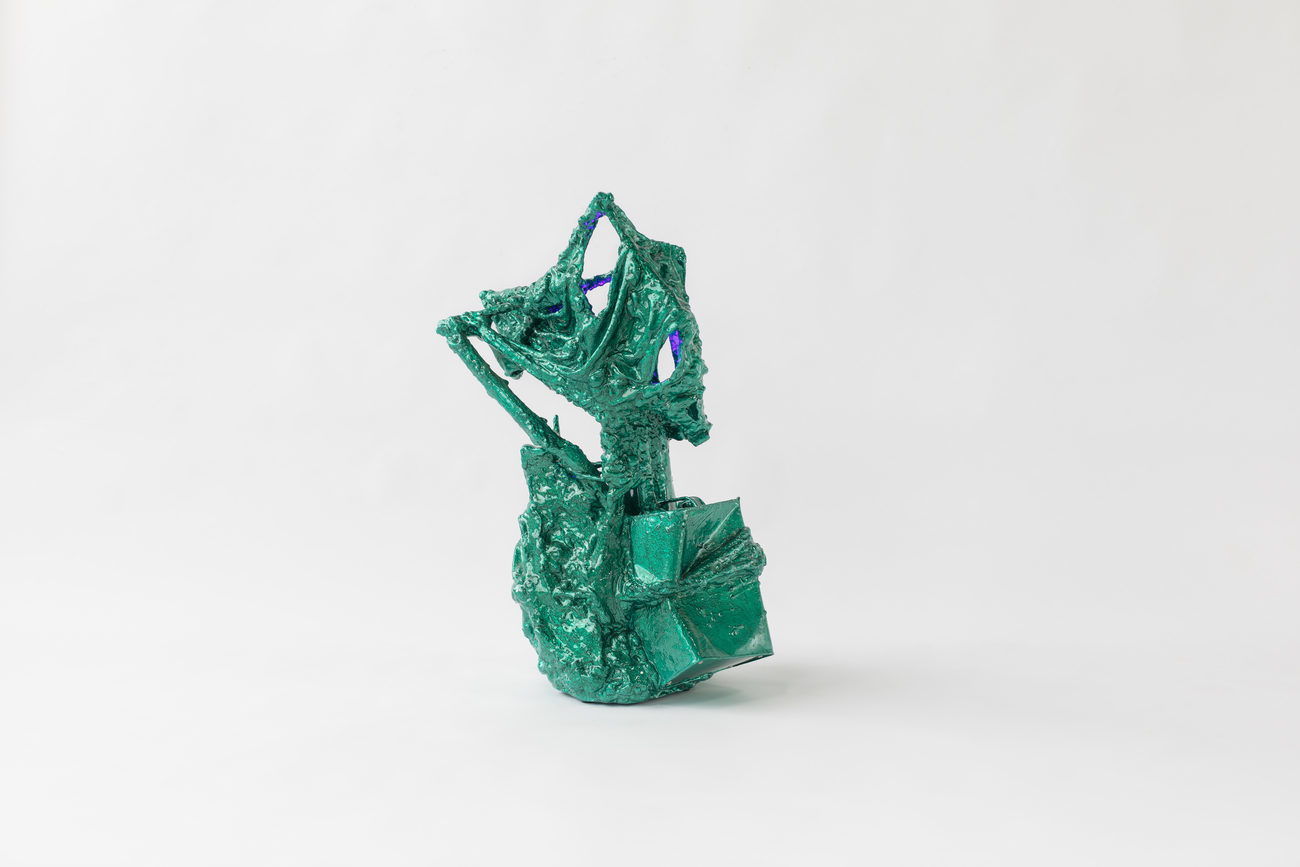
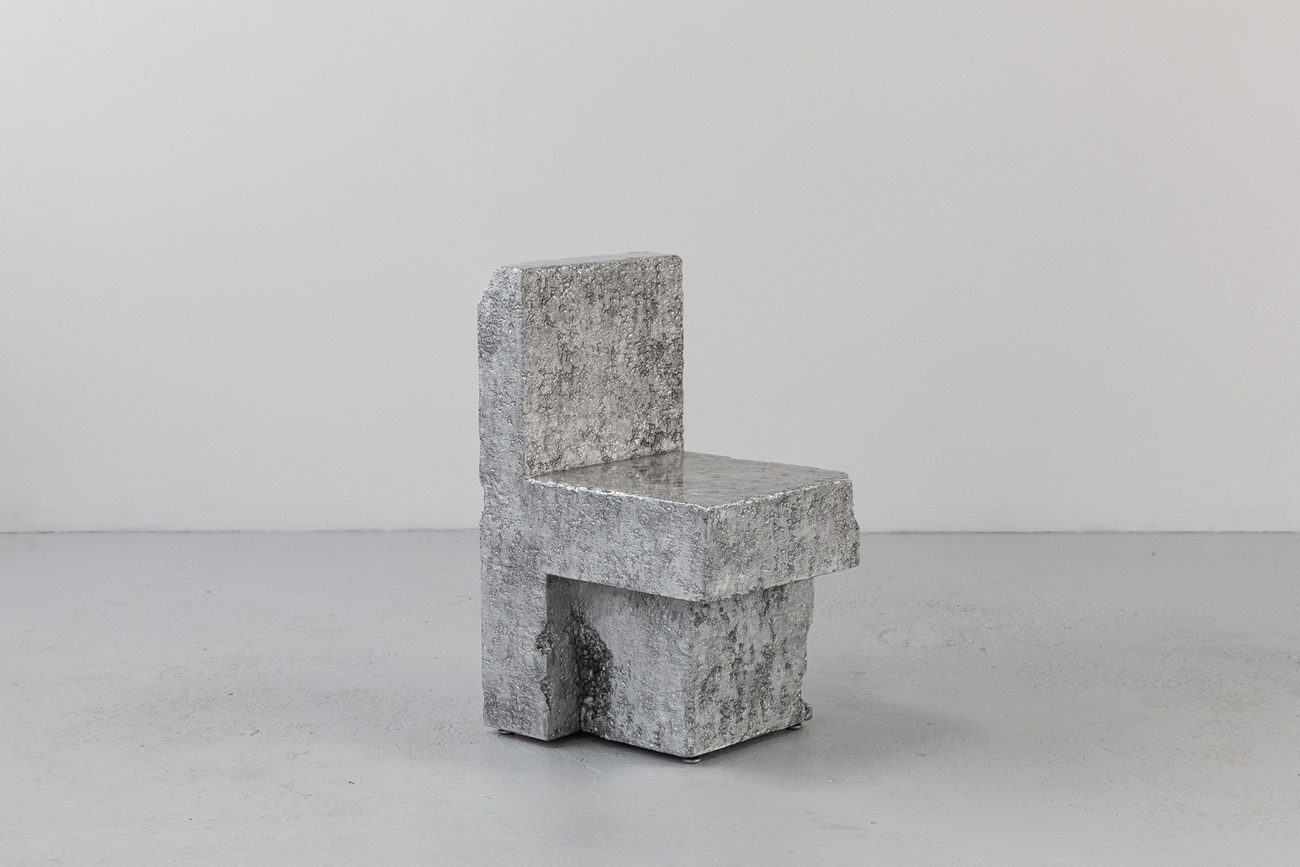
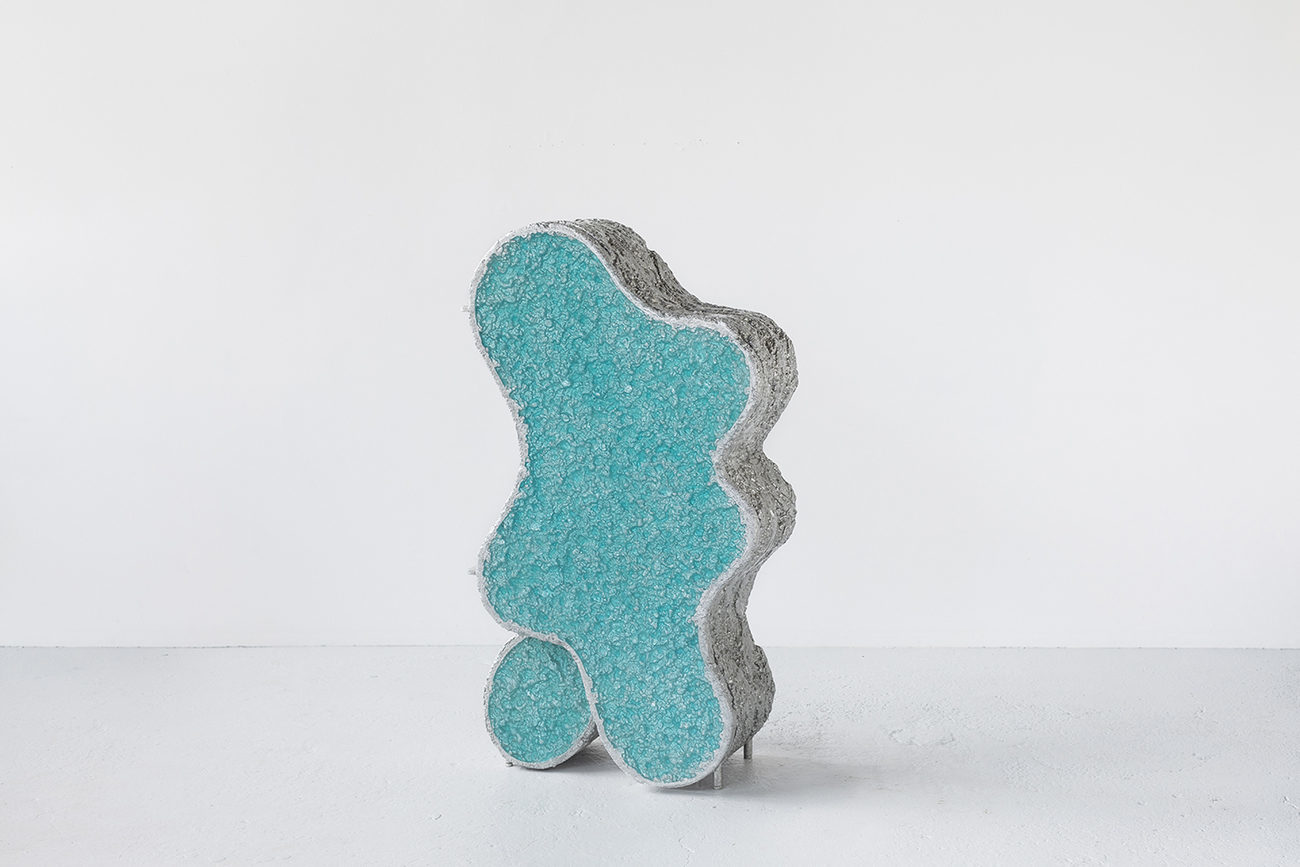
The confidence and care with which these objects were made confirms an aesthetic that has the potential to alter our perception of the surrounding environment. Imagine one of these objects outside of the artists studio, exhibition space, or show room. It could almost feel as if there was a glitch in the space-time fabric, where these objects exist without necessarily belonging; like they fell out of a time machine that just returned from a movie set in the distant future or something.
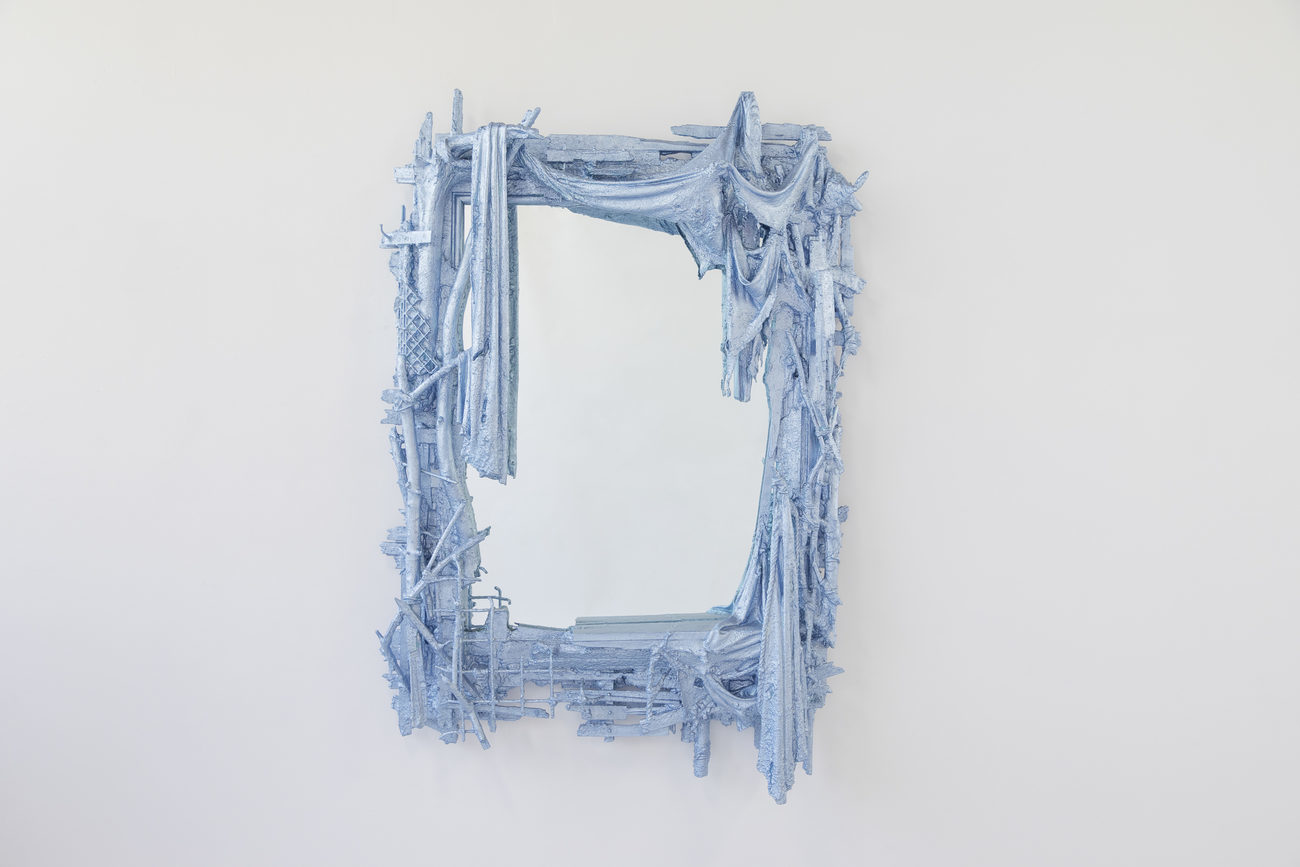
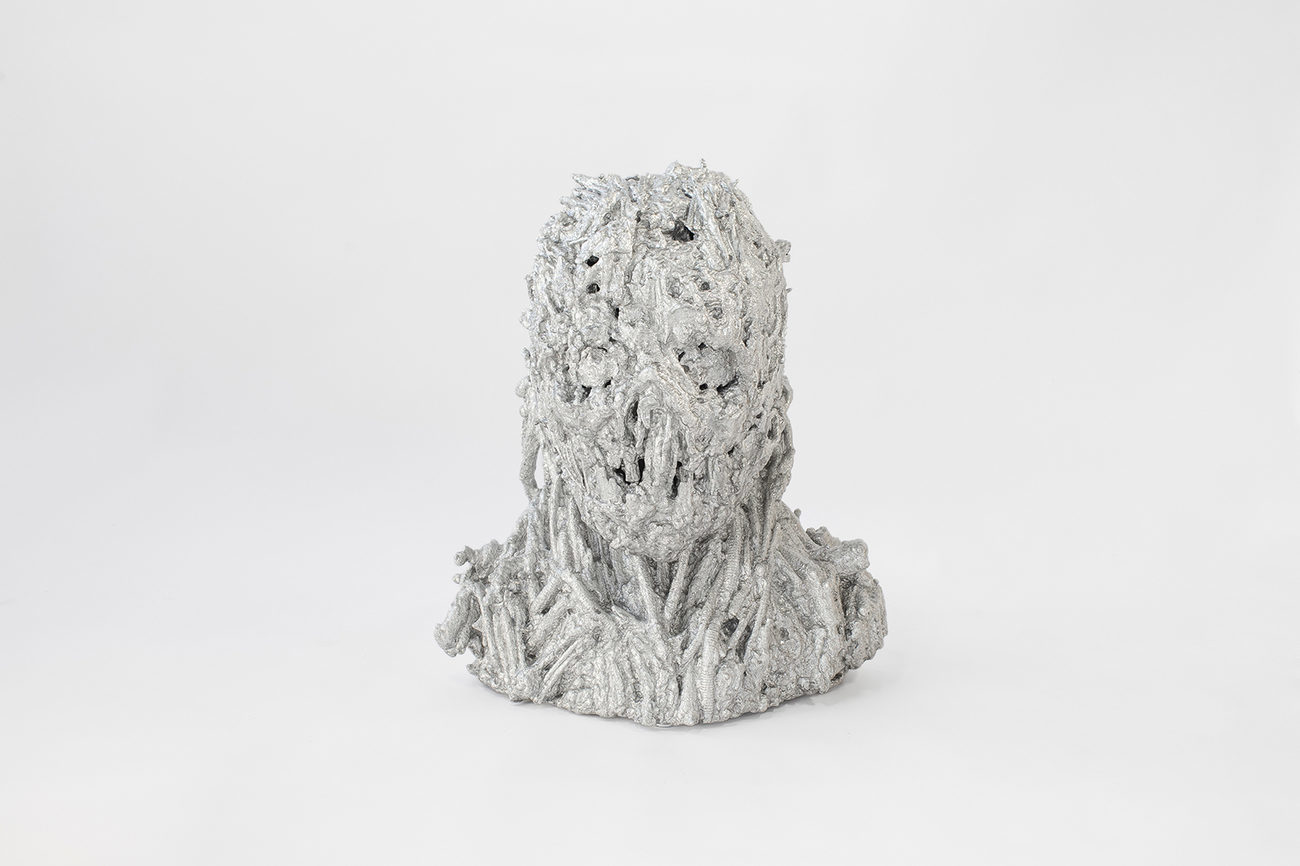
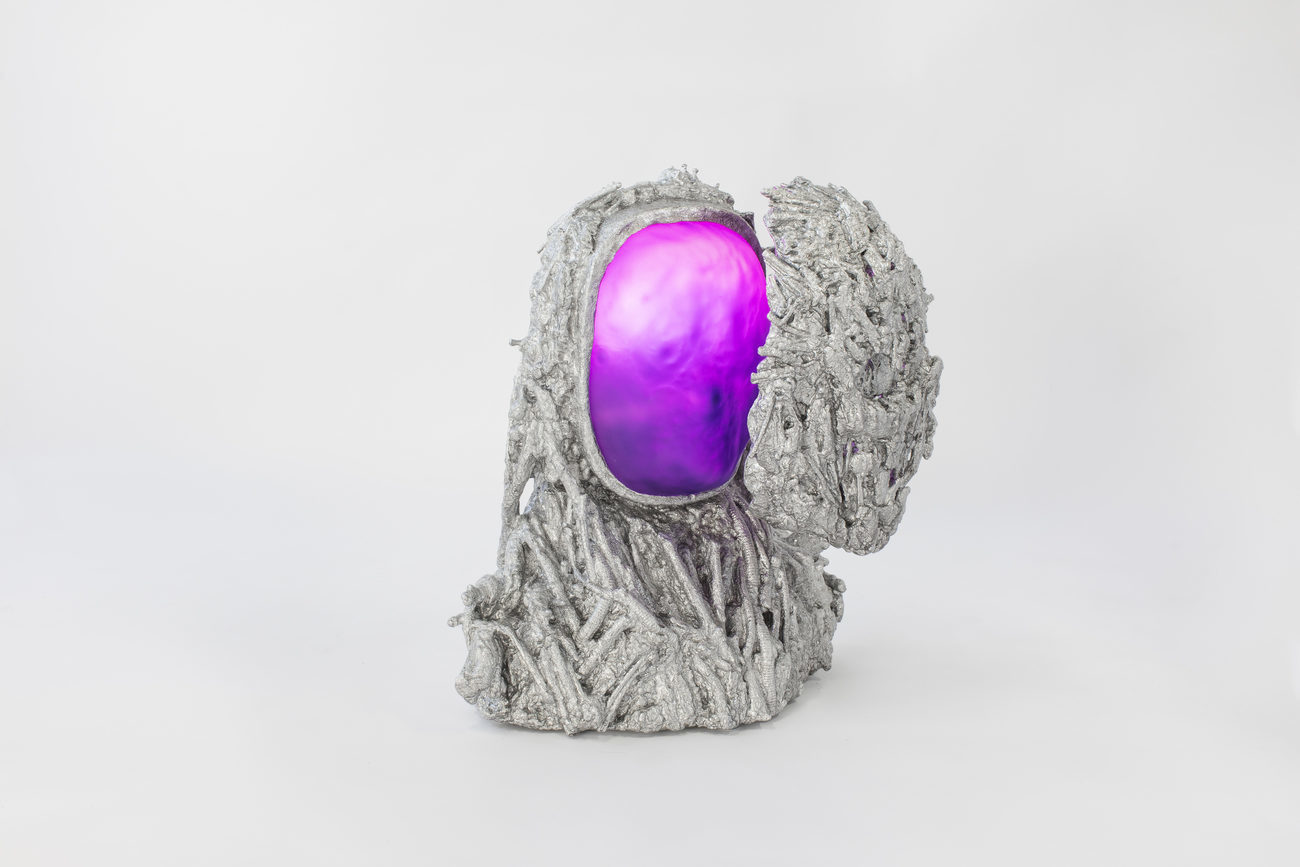
The play between the artists gallery and designer showroom reminds me of the artists Marc Camille Chaimowicz or Cosima Von Bonin, both of whom have consistently sustained a cross-disciplinary practice that utilizes the history of painting, drawing, collage, sculpture, installation, furniture, lighting, ceramics, textiles, and wallpaper, challenging the categorization often used to distinguish between art and design. 1 It is interesting to consider the intention behind this method of working; the interplay between something completely untouchable and something utilitarian provides an avenue to imagine a more playful yet still functional reality. Could we really live like this? What would reality feel like if industrial design more commonly teetered into surreality?
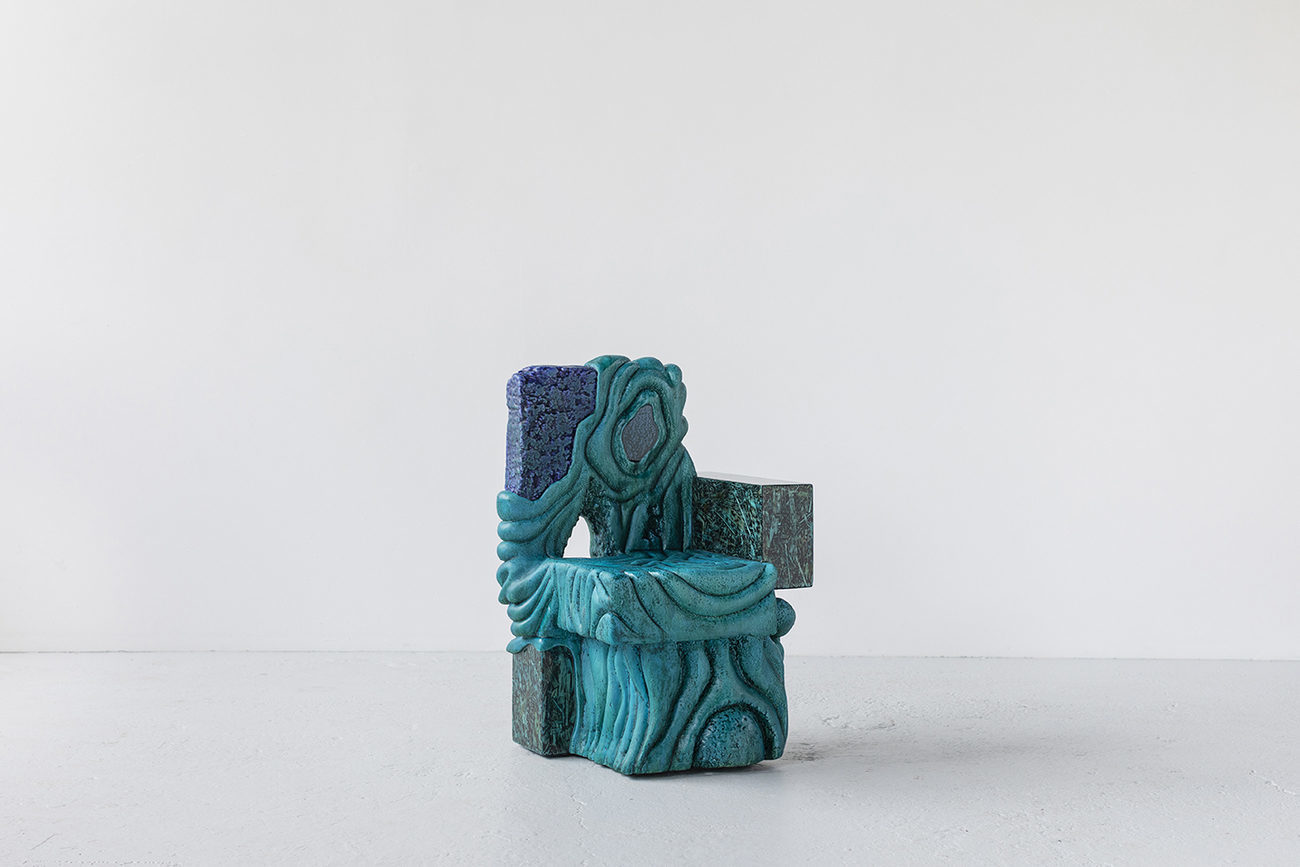
Form holds weight above function, considerably more in some works than others. Though each piece has its utilitarian value, the actual experience of using these objects as functional household furniture would certainly require compromise. There would inherently be an agreement or understanding that the person would need to have that differs from your typical perfectly comfortable “designed for humans” furniture. Owning these pieces with the intent to use them would involve discomfort, awkwardness, precarity; it would require a similar flexibility as one would need to have when in a relationship with another human or an animal. They have their own personality, their own attitude, and if you want to have a functioning relationship with them, you will need to accept that and work with it. I wonder if this isn’t something to think about when considering this works’ relevance to the reality around us. Like, perhaps this is a work of Realism, not as a visual representation but in the conceptual sense, working to sneak the unpredictability of true reality into the very predictable reality of the white wall gallery space, or collectors home, under the guise of a shiny expensive object.
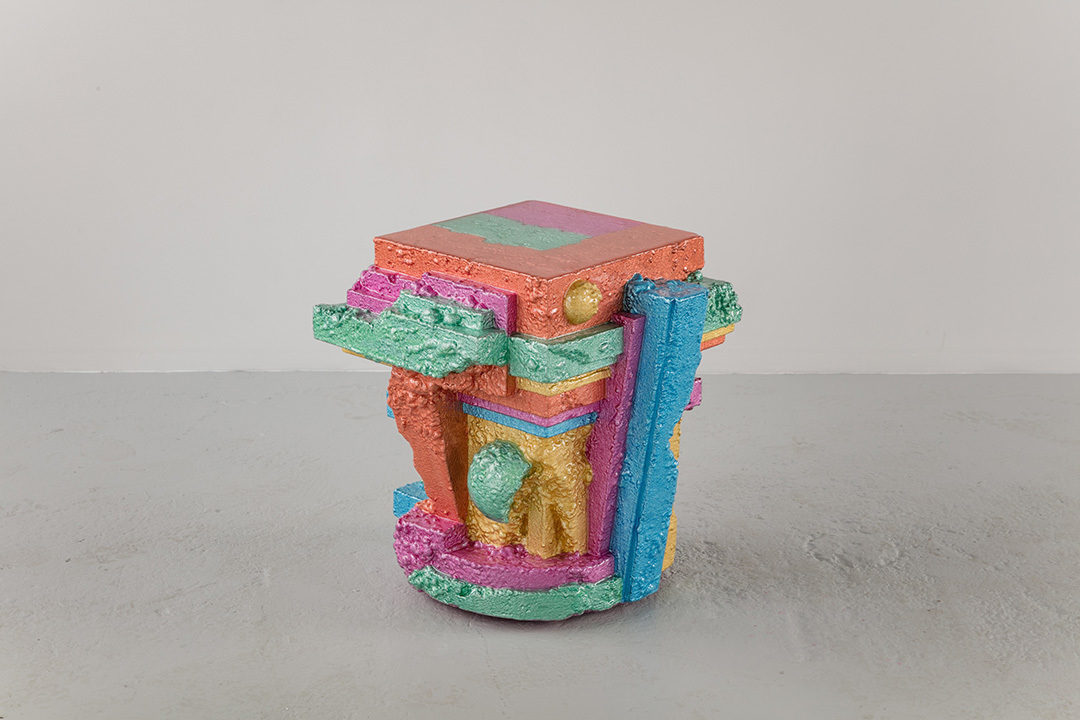
There are many different links to make from this body of work, but one of the most prominent remains to be with worlds of Science Fiction. Many SF productions often concern themselves with stories of outer space travel or social struggles that derive from advancements in technology. While Shuddering presents a more neutral zone that feels absent of these types of concerns, it does explore a twisted relationship between technology and the natural world through a distinct neglect for the usual refinement that technology embodies. There is an exploration of the aesthetic potential that lies within a “dystopian” space that has been left, abandoned by human control, closely resembling elements of an untouched landscape or the ruins of a past civilization. Just as Science Fiction blends ancient and futuristic, natural and artificial, in order to encompass the vast influences of history, this work combines things and pulls them apart from each other, playing with the malleability of what is real just as easily as an amoeba can move around and reproduce so fluidly in the water.
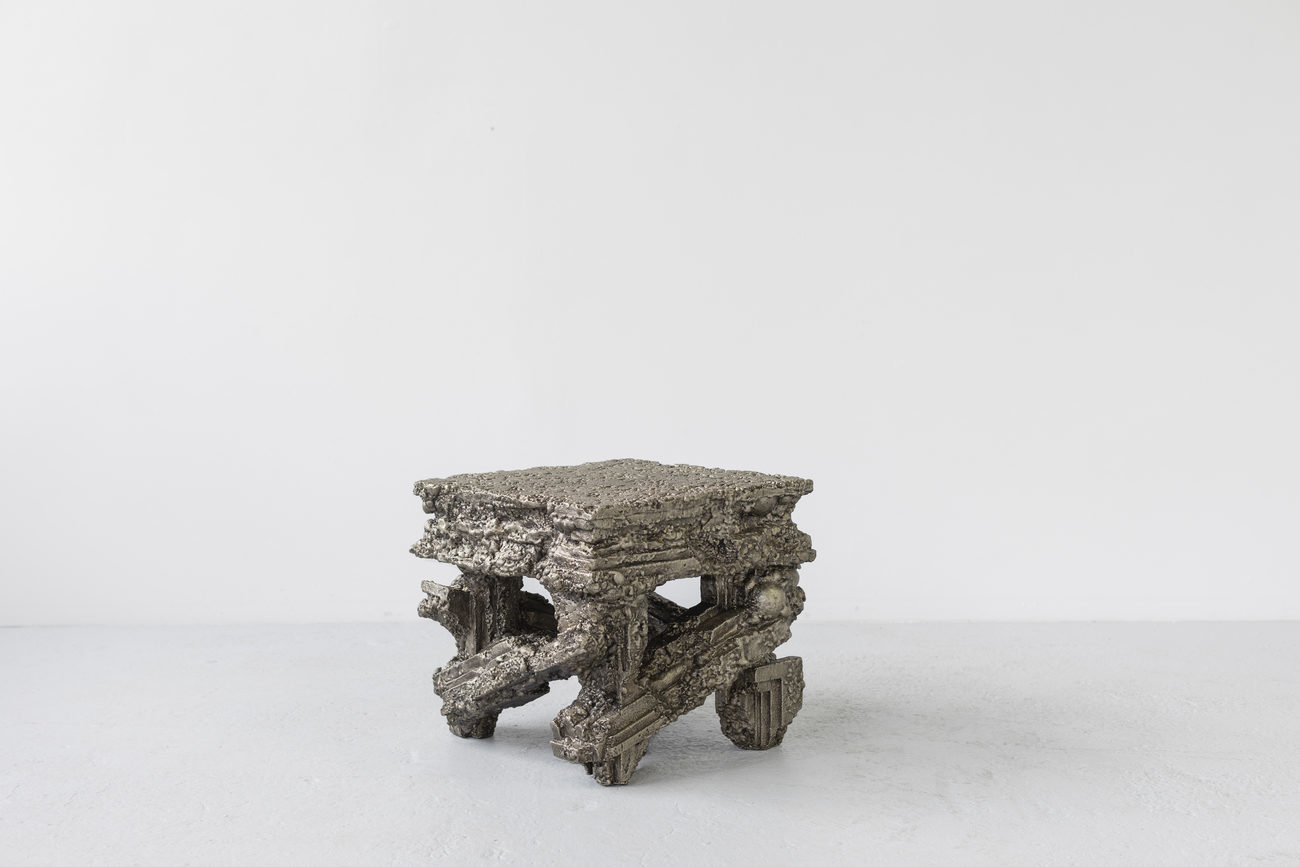
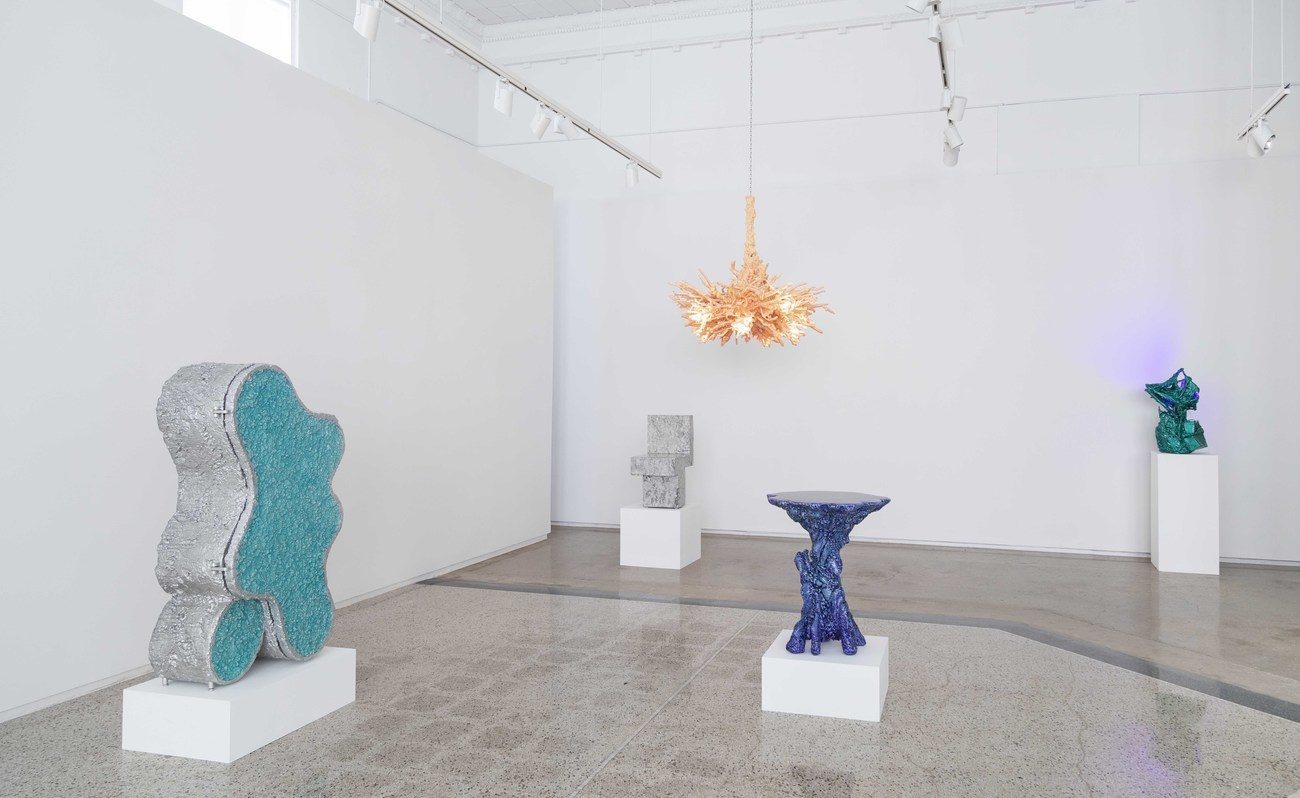
More info at https://reyesfinn.com/
1. “Marc Camille Chaimowicz” October 8,2020, Wikipedia, Link.